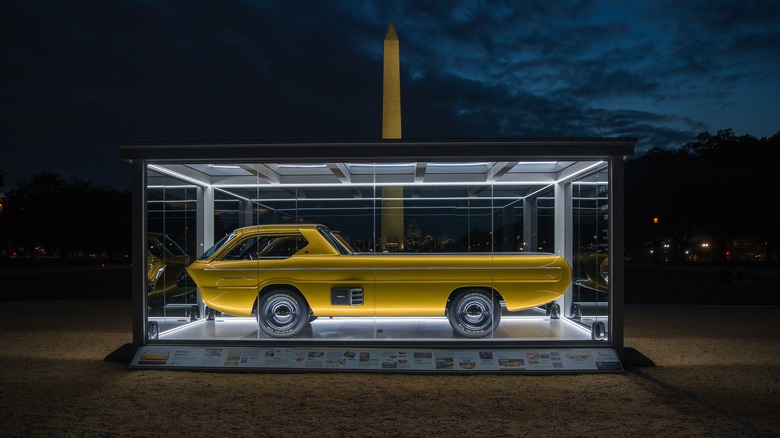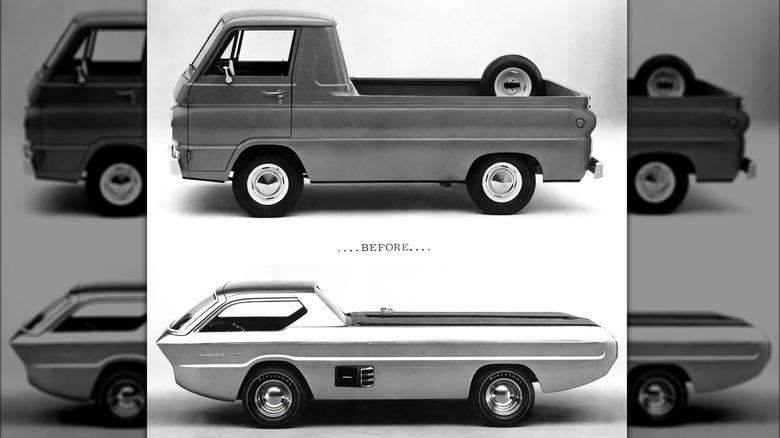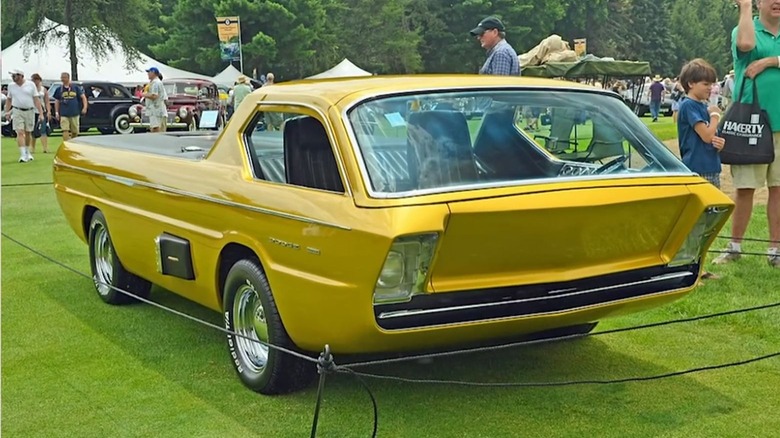Dodge Deora: The Wild Custom Car That Made Hot Wheels History
If you were a kid growing up when the 1960s gave way to the 1970s, chances are you played with a lot of miniature toy cars made by Hot Wheels. You might even have spent time gluing car models together, both of which were all the rage at the time and remain a relevant anchor point in America's pop culture history.
The story behind how the Dodge Deora came to fruition is what myths and legends are made of. It's a vehicle that started as a highly customized concept vehicle, went on to become one of the most famous "show cars" in history, then part of the original "Sweeet 16" cars from Hot Wheels, and eventually, a wildly successful AMT model, which actually plays an integral but sometimes overlooked role in the vehicle's evolution. But let's start at the beginning.
In 1962, an up-and-coming automobile designer by the name of Harry Bentley Bradley was hired by GM to join its Design Staff. He had recently graduated from the Pratt Institute in New York, honing his natural talents as a design artist by routinely submitting drawings of customized cars to automobile magazines of the era (i.e., Rodding and Re-styling, Rod & Custom, Customs Illustrated).
It's these very drawings that first drew the attention of Mike and Larry Alexander, a couple of well-known brothers in Detroit who were in the customization business. So, when Bradley showed up in Detroit to work for GM, a friendship was quickly struck that would redefine the concept of customization.
The eXperimental Dodge Truck by the Alexander Brothers
In 1964, the Alexander brothers had an idea to customize a cab-over pickup truck that Ford (with the Econoline) and Chrysler (the Dodge A100) were making. Volkswagen's success with its Type 2 microbus heavily influenced these Detroit-built cab-over designs. Since the Alexanders already knew Bradley, they asked him to create something based around the A100 and assumed GM would very likely front the vehicle if they went with his design. A hot rod version of the A100 is one of the coolest vehicles ever uncovered on American Pickers.
His design plan centered on merging the prominent, stand-alone cab more seamlessly into the body. Having worked for GM for a few years, he knew it was the company's mandate to de-emphasize cutlines along the vehicle's sides, so he eliminated the doors entirely. To get people inside the cab, he opted for a one-piece front-opening hinged hatch using the lift-up rear tailgate from a competitor's vehicle — a 1960 Ford station wagon. Bradley thought of the whole exercise as a true conceptual proposal rather than any sort of customizing solution, so why not boldly go in a different direction? He called it the Dodge XTAB (eXperimental Truck by the Alexander Brothers).
Bradley's XTAB was such a hit that Chrysler, in fact, gave them a stripped A100 to do with as they pleased. The Alexanders immediately began to work their sheet metal magic by chopping the stock phone-booth-style cab all the way down to the floor pan and placing a new roof smack dab on top of what was the stock steering column. But this caused an issue.
Comfort and usability were not features of the XTAB
Bradley's initial design called for a one-piece hinged door, but with the newly chopped top, the A-pillars were too narrow and couldn't support the weight. Undaunted, the Alexanders took the proverb "Necessity is the mother of invention" to heart and created an even wilder split-door setup wherein the window (still taken from the 1960 Ford) opened upwards via an electric motor while a custom-built lower section now swung open on a center pivot much like a conventional car door.
Since the roof was now sitting squarely on the steering column, the brothers needed to devise a new way to steer the XTAB, so they created a moveable horizontal strut with a dragster-style butterfly steering wheel attached. This steering strut swung out to let the driver in, then moved back into position and was locked into place when in driving mode. Steering directions were sent to the wheels via a sprocket and a chain mechanism.
Unfortunately, the cab's seating area was a problem. To accommodate the driver (and one lone passenger), the Alexanders moved the slant-six engine back 15 inches well into the truck bed. The radiator was also moved into the bed (ahead of the rear axle) where holes were cut and fitted with electric fans to facilitate airflow. However, this forced them to relocate the gas tank (behind the rear axle) to just behind the cab. Hiding all this hardware, now taking up all the cargo space in the bed, was a hard tonneau cover.
The Deora by any other name would not be as cool
Ironically, the tailgate from the 1960 Ford station wagon wasn't the only Ford part used by the Alexander brothers. The side exhaust vents were the taillight bezels from a 1964-1/2 Mustang, and the XTAB's hidden taillights were the sequential turn-signal units from a Thunderbird. Arguably, it could be said the vehicle is more Ford than Dodge.
As the project progressed, the model company AMT asked if they could turn the experimental truck into a 1/25-scale plastic model kit. During the negotiations, everyone agreed the long XTAB name didn't have enough pop, so a contest was held to rename it (while simultaneously generating buzz for the upcoming model). An ad ran in the September 1965 issue of "Car Model" magazine with Bradley's drawings of the XTAB along with photos showing the actual vehicle in various stages of completion, and the winner was announced in the following February 1966 issue.
All the entries were looked at by a committee that included "Big Daddy" Don Garlits (one of the winningest drag racers of all time), Oscar Koveleski (founder of Auto World, a mail-order store for plastic models and slot racing cars), "Car Model" magazine's co-publisher, AMT's Director of Marketing, and the Alexander brothers. The winner was a 13-year-old boy named David Hagedorn, who submitted the name "Deora," which, as he explained in his entry, meant "golden" in Spanish. He was close, as "de oro" is the actual Spanish meaning for "of gold," but Bradley's original design was painted in gold, so they all agreed to go with Hagedorn's name.
Mattel's Sweet 16 included the Deora
The same year (1966) that Hagedorn won the naming contest — and the very first model of the Alexander brothers experimental truck when it left AMT's plant – Harry Bentley Bradley (the guy who originally designed the thing, if you recall) decided to jump ship at GM and go to work for a new company in California that was, of all things, making small 1/64 scale diecast vehicles. Mattel was looking for a designer who had worked for one of Detroit's "Big 3" automakers to help them create a new line of tiny toy cars to compete with the juggernaut that was Matchbox.
When the life-sized Deora was finally complete, Chrysler leased the car for one year and touted it as a significant advancement in modern vehicle styling on the show car circuit. When it appeared at the Detroit Autorama in July 1967, it blew the doors off the audience, which is ironic considering it didn't even have doors. It went on to win nine awards at that show, including the prestigious Ridler Award.
Meanwhile, Bradley was now knee-deep in diecast metal parts, designing pocket-sized automobiles for Mattel. The company's original "Sweet 16" lineup released in 1968 consisted of sixteen cars, including the Deora (now with 2 surfboards atop the tonneau cover) – and Bradley created all but one. Sales topped 16 million during that first year of production. Since then, more than 800 models and 11,000 variations have been made, totaling more than 4 billion cars. According to Mattel, eight Hot Wheels are sold every second, and some are worth more than you can imagine.
The Deora is truly a national historical treasure
Interest in the Deora was at an all-time high, so Chrysler decided to extend the lease for another year, this time sporting a lime green pearl paint job. When the lease expired, the Alexanders sold it to a custom car enthusiast, who eventually put it into long-term storage. In 1998, the owner (Al Davis, Jr.) recruited Harry Bradley to help him refurbish it.
Amid its refurb, Mattel released an updated version of the original Hot Wheels Deora (labeled the Deora II) in 2000. The truck was ready in time to appear at the 50th-anniversary Detroit Autorama in 2002 as part of a special display showcasing custom cars from the Alexander brothers. Oddly, Bradley had still never seen the finished vehicle in person at the time, saying, "Building a custom is more engrossing than owning one."
In 2003, famed custom car designer Chip Foose built a real-life version of Mattel's Deora II powered by a Cadillac Northstar V8 as a present for Hot Wheels' 35th birthday. In 2019, Mattel unveiled the Deora III, designed by the company's very own Mark Jones. Then, in August of 2024, the experimental truck from the Alexander brothers was added to the National Historic Vehicle Register, entering as the 36th car to achieve such a prestigious honor. While ultimately one of the most incredible show cars ever, the Deora is one of a handful of Dodge concept vehicles we're glad were never mass-produced.




